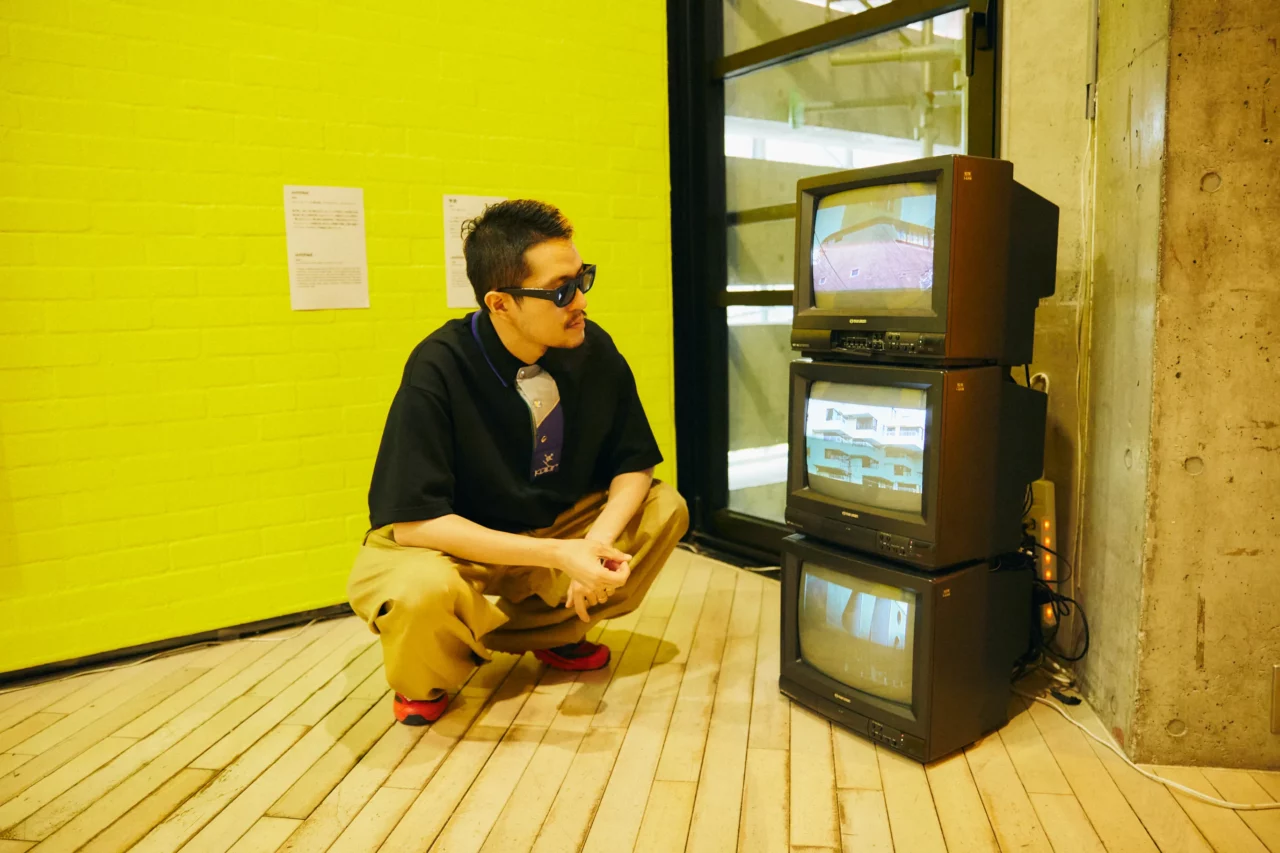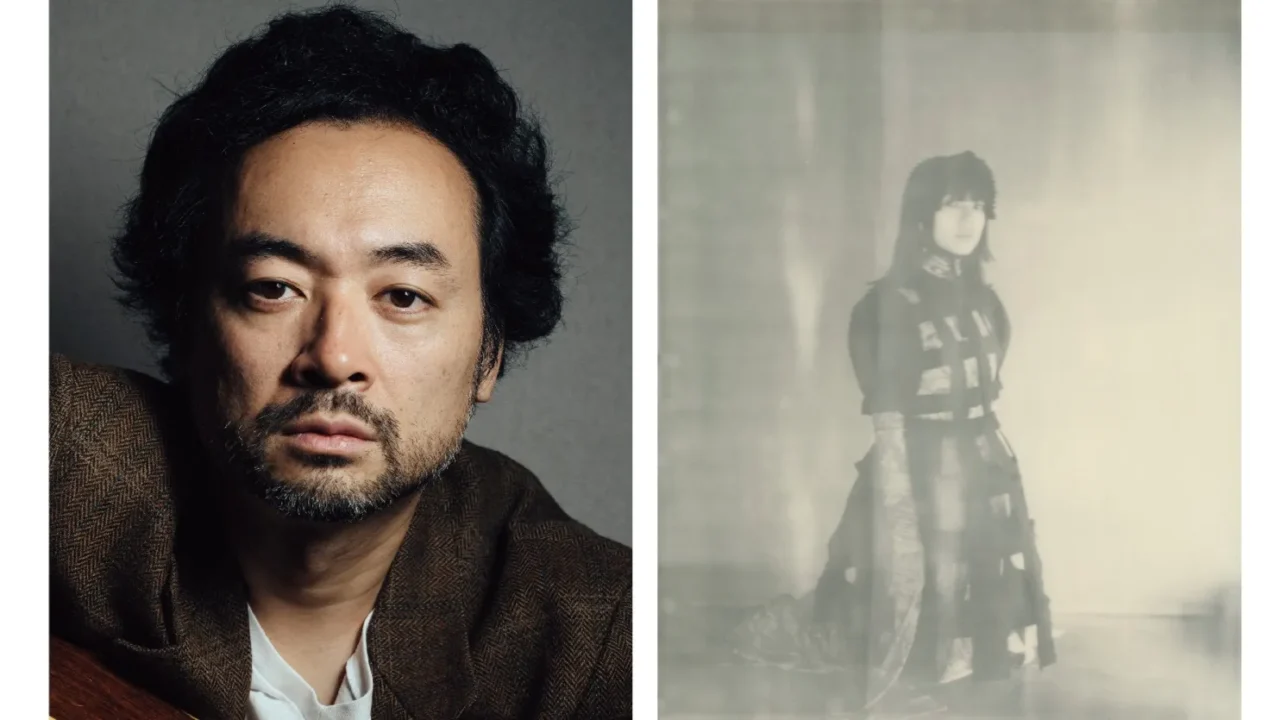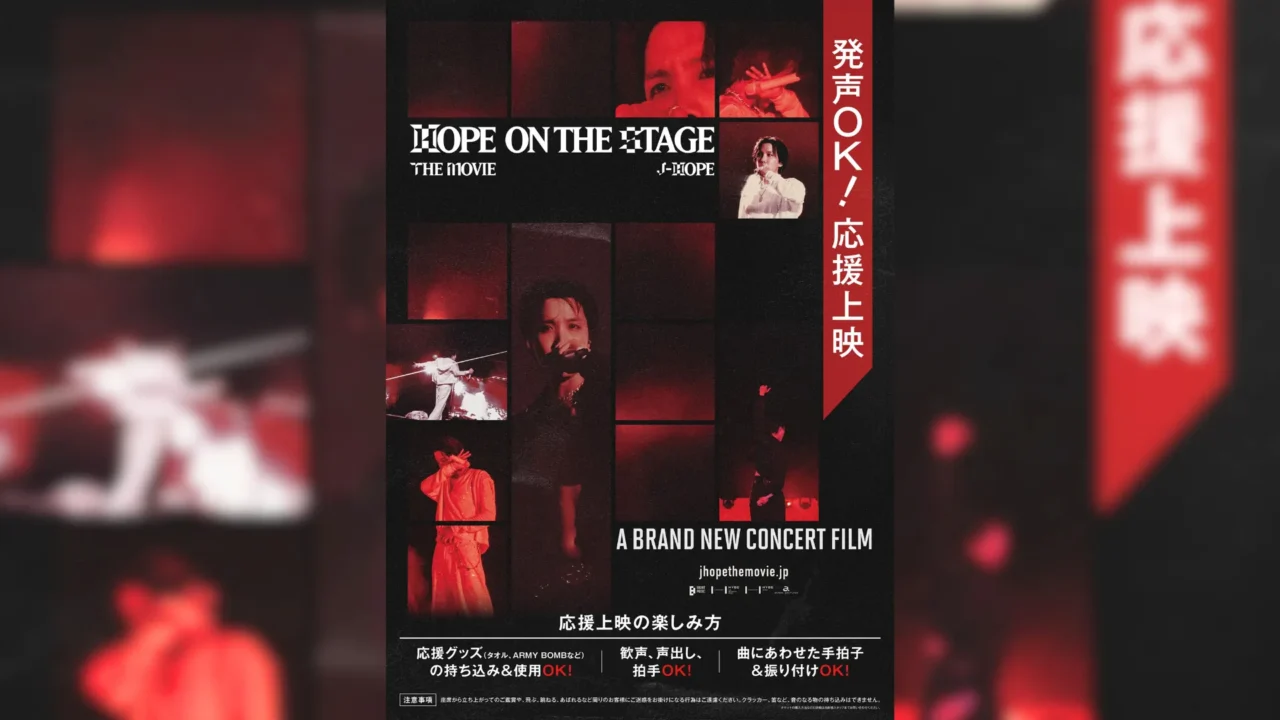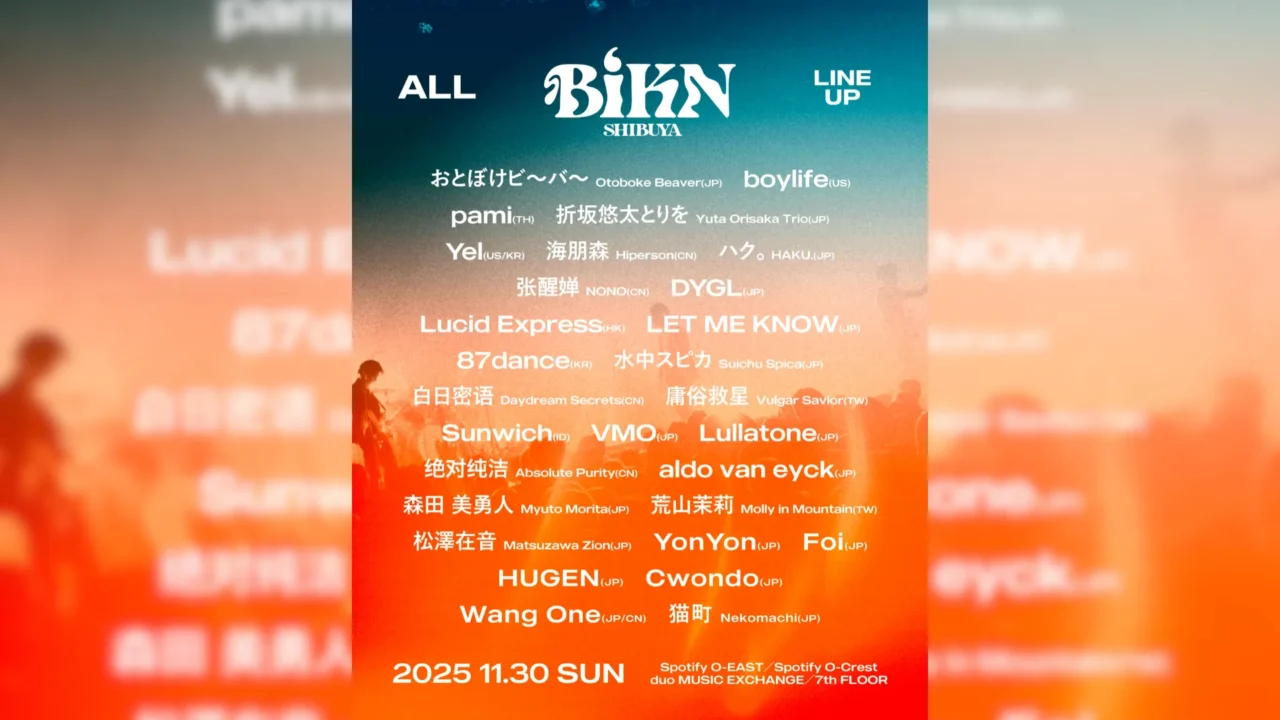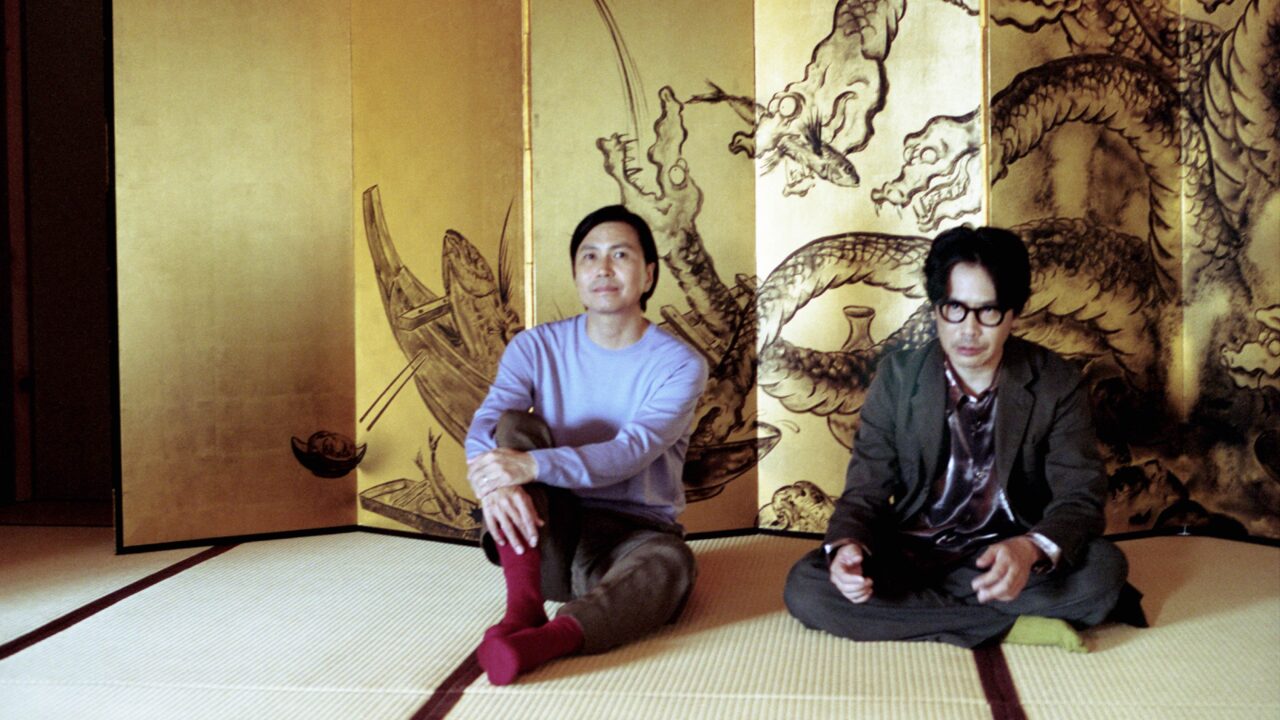Mark your calendars for November 7-10, as ‘Art Week Tokyo (AWT)’ invites art enthusiasts to embark on a journey of creativity across 53 participating museums and galleries. With a free shuttle bus, the ‘AWT BUS,’ running every 15 minutes, this event evokes the nostalgic charm of school field trips while making art accessible to all.
In this exciting series, we team up with special guests to uncover the treasures of ‘AWT.’ This installment features TaiTan, the dynamic rapper from Dos Monos and an innovative creative director. Known for his thought-provoking podcast ‘Kiki Kaikai’ with musician Shukei Tamaoki and his engaging presence on TBS Radio’s ‘Nōtō,’ TaiTan embodies a whirlwind of inspiration.
With a philosophy of exploring every intriguing artist, regardless of exhibition size, TaiTan recently visited the ‘SIDE CORE Exhibition: Concrete Planet’ at the Watarium Art Museum. To our delight, members of SIDE CORE made a surprise appearance, enriching the experience with insights straight from the artists. Join us as we dive into TaiTan’s journey through art and discover how it fuels his own creative spirit.
INDEX
How an Encounter with Banksy Ignited Taitan’s Passion for Contemporary Art
What was your introduction to art?
TaiTan: I can’t pinpoint a specific moment that sparked my interest, but from a young age, I’ve always had access to movies, music, television, and theater, which fueled my passion for pop culture and creativity. Growing up in the internet era, I became accustomed to the diverse mix of cultures—such as domestic and international anime, videos, and classical music—coexisting on platforms like YouTube, where different timelines and contexts blend seamlessly. Information has always been readily available to me, making it easy to explore various influences.

A dynamic rapper from Dos Monos, TaiTan seamlessly blends his musical talent with a visionary approach as a creative director. He’s the mastermind behind innovative projects like the ¥0 magazine magazineⅱ, the unique TV Tokyo program Gai, which takes over the station’s dead air, and the intriguing shop Tō, where silence is key to ‘stealing’ products. Additionally, TaiTan brings his engaging personality to the podcast Kiki Kaikai and TBS Radio’s Nōtō, captivating audiences with his insights and creativity.
TaiTan: I remember being drawn to Banksy and his presence in the art scene when he emerged in the 2000s while I was in middle school. At the time, I didn’t fully understand it in words, but I think Banksy’s arrival marked the beginning of a noticeable trend in art activism, where art started to intervene in social and environmental issues. It broadened my perception of what art could be.
The SIDE CORE exhibition you viewed today also revolves around the theme of “expanding expressions in urban spaces,” with the art team engaging in various actions in public spaces and on the streets. Were you already familiar with their work?
TaiTan: I’ve been interested in SIDE CORE for a while. I’m not the type who makes visiting museums or galleries a hobby, but if there’s an artist that catches my interest, I’ll go anywhere, regardless of the scale of the exhibition or the number of artworks. One of my reasons for visiting the ‘Contemporary Japanese Art: The Ryuutarou Takahashi Collection’ exhibition at the Museum of Contemporary Art Tokyo was to see SIDE CORE’s past works.
Note: The exhibition runs from August 3 (Saturday) to November 10 (Sunday), 2024, featuring representative works from 115 artists, capturing the essence of contemporary Japan as seen through the eyes of psychiatrist Ryuutarou Takahashi, rich with a critical spirit toward the times.

TaiTan: At the art hotel BnA_WALL in Nihonbashi, there’s a suite designed by SIDE CORE, and I’ve had the experience of staying there. The room features exposed concrete in places, and the floor is laid with intricate tiles that were crafted by 3D scanning and cutting surfaces from Tokyo’s streets and walls. It’s a room that feels quite noisy and intriguing, far removed from the typical hotel image. This was my second time visiting, and I’m glad I was able to take my time to really appreciate it.

INDEX
TaiTan Shares His Highlights from Tokyo’s Inaugural Major SIDE CORE Exhibition
Please share your thoughts on the highlights of SIDE CORE’s first major exhibition in Tokyo, Concrete Planet.
TaiTan: I found the new work Tokyo no Tori (2024), which features a large collection and collage of numerous street signs, to be fascinating. By viewing a collection of construction signs that are slightly misaligned in their designs, I was surprised to realize that there is no standard pictogram that exists across all of them.

TaiTan: Another piece that left an impression on me was Junrei Roadside (2017), where I identified locations using footage from live cameras set up in Tokyo and Fukushima. I actually visited those places and took photographs while placing a color filter over the camera lens.

TaiTan: The perspective on how two different places represented by live cameras are connected really stimulates the imagination beyond the video. While it’s a conceptual piece, I appreciated the approach of creating a physical “impact” in the landscape and the humor in the behind-the-scenes story about using filters on the lenses of Takeshi Kitano’s films to shape the worldview.
What kind of inspiration did you receive from SIDE CORE today?
TaiTan: The term “concrete,” which is also part of the exhibition title, symbolizes the city and carries an immovable image. However, SIDE CORE shakes up that interpretation from a fresh perspective, layering small physical actions to create change. I also always want to intervene in the fixed interpretations and structures within society from a new viewpoint, so I was inspired by SIDE CORE’s way of disrupting and deconstructing order.

INDEX
Art as a Means to Revitalize the Unnecessary in Urban Environments
This SIDE CORE exhibition is built around the themes of “perspective,” “action,” and “storytelling.” I sense that these concepts align well with your creative work, TaiTan.
TaiTan: I collaborated with Ryohei Kamide, who previously worked on TV Tokyo’s Hyper Hard-Boiled Gourmet Report, to create a 10-minute television program called Gai (2021). We took over the early morning dead air when the broadcast stopped. The show featured surreal footage based on a premise where we hacked both TV Tokyo’s dead air slot and the surveillance cameras throughout Shibuya. During that month-long dead air period, we continuously streamed our new song. The program was focused on Tokyo’s underground, including a performance by Dos Monos filmed in the underground vaults of the Shibuya River.
That’s a novel idea.
TaiTan: Despite television being packed with regular programming from morning to night, there are inexplicable gaps of dead air. The culverts, too, are waterways that the city has forcibly buried underground by covering the rivers, rarely acknowledged yet undeniably present—almost like ghosts.
Someone once said, “In the basement of a building in the city, you can hear the murmur of the river that has become a culvert at midnight.” When you actually visit those places, you find that during the day, the noise of the city drowns it out, but at night, when the streets quiet down, you can indeed hear the faint sound of water flowing. In reality, it might just be the sound of drainage flowing through the sewer pipes. But standing still in the pitch-black underground, you experience a sensation as if your mind is trapped in your own head, or as if you are asleep but fully conscious. This draws you into someone’s narrative that “this is the sound of the river,” and the endless expanse of invisible underground waterways begins to float hazily in your mind.
Excerpt from a text for the SIDE CORE exhibition (Concrete Planet)
TaiTan: SIDE CORE also has works related to culverts, and the statement for this exhibition starts with a description of underground waterways. I’ve always been interested in things that are stagnant or deemed unnecessary in the city, like culverts or dead air, and I’ve wanted to intervene in those elements.
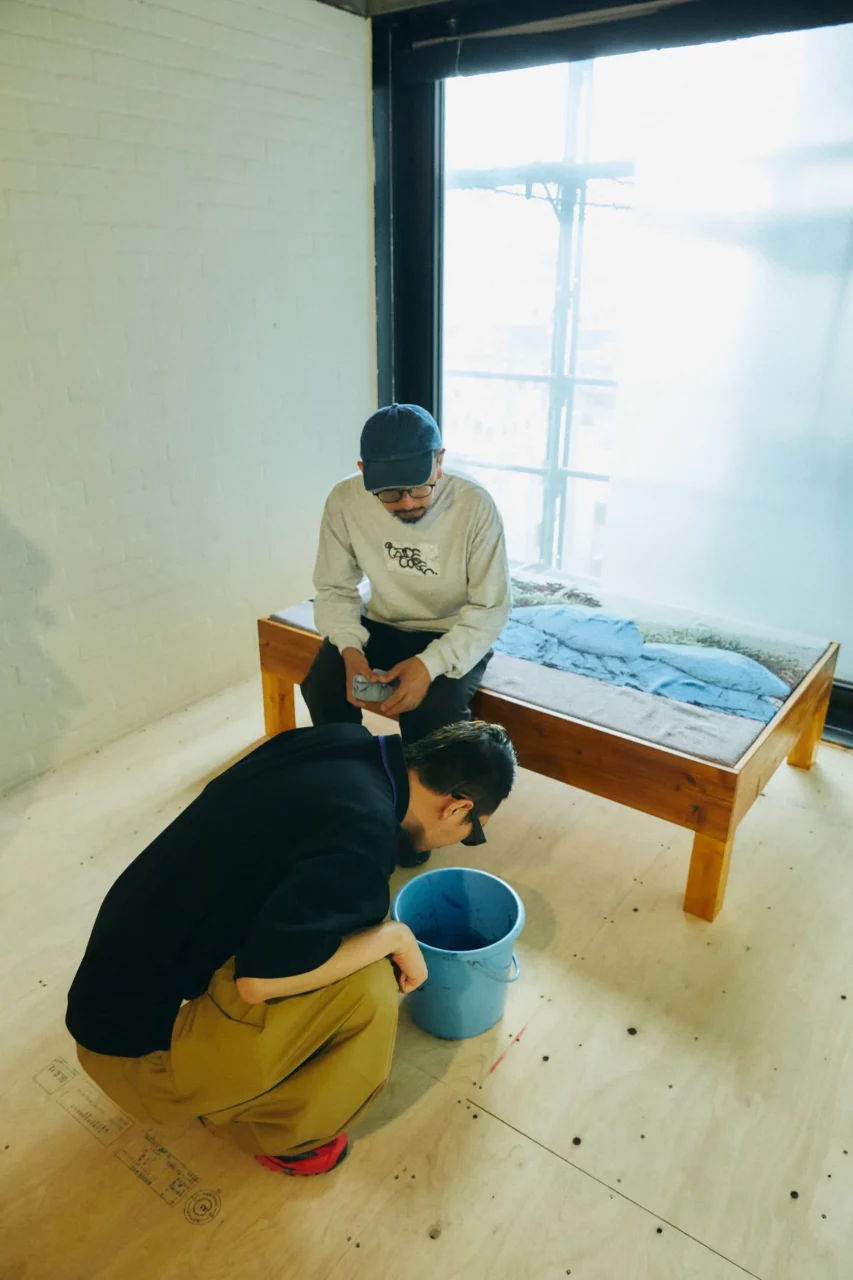
INDEX
How Processes of Negotiation and Communication Can Elevate Artistic Value
Culverts and dead air both evoke the dynamics of the city’s tendency to ‘erase things temporarily.’ I feel that as redevelopment accelerates in Tokyo, the city is seeing an increase in ghostly places and objects beyond just culverts. Is there anything in particular that you are focusing on right now?
TaiTan: The acrylic panels used for splash prevention placed throughout the city during the COVID-19 pandemic also feel ghostly to me. They are transparent yet undeniably present, with the entire population having accepted their existence. I found this conservative state quite intriguing.
Although acrylic panels are no longer necessary, many businesses find it challenging and costly to remove them, so they often leave them as they are. In 2023, I collected and processed these discarded acrylic panels and included them in an album by Dos Monos, which we released as the ‘Acrylic Dismantling Edition.’
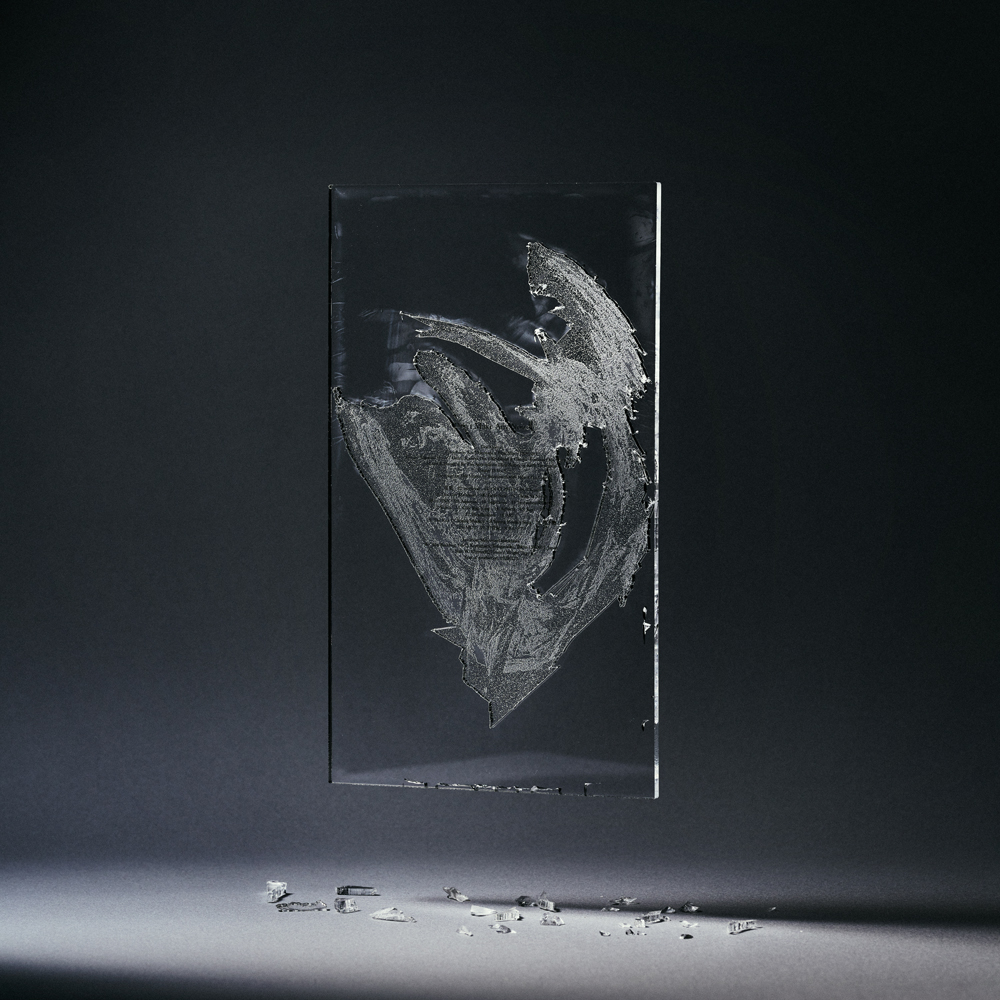
This album was produced in collaboration with graphic designer Heijiro Yagi and released in a limited edition of 500 copies. The audio tracks were created by processing acrylic panels that were no longer used, and they are included in the “Acrylic Dismantling Edition.” By scanning the embedded URL on the record and entering a password, purchasers are directed to an exclusive audio site.
TaiTan’s Cover and the “Acrylic Dismantling Edition,” along with many works by SIDE CORE, involve a significant process of negotiation and communication with various people, such as store owners, television networks, and city managers.
TaiTan: With Cover, I went to negotiate directly with the television station. I realized that if I put in the effort to negotiate, the size or influence of the other party doesn’t really matter, and that there’s no limit to what can be achieved. I believe that how we value the negotiation process can also contribute to the value of the artwork.
Tooru Matsushita from SIDE CORE once said, ‘Photography is not just about capturing a moment; rather, the totality of the time that flowed before the photo was taken is what appears in the image.’ He also mentioned that in works that intervene in public spaces, the value is often placed on creating a situation where such interventions are possible through negotiation.
Just as I’ve negotiated with television stations and restaurants, and SIDE CORE has negotiated with government entities to create their works, there are certain things that cannot exist without involving people who believe that art has nothing to do with their lives. If our efforts in negotiating and creating can spark a feeling in someone that they too might be able to achieve something, I would be thrilled. The fact that such secondary impacts can arise serves as motivation for my creative work.
